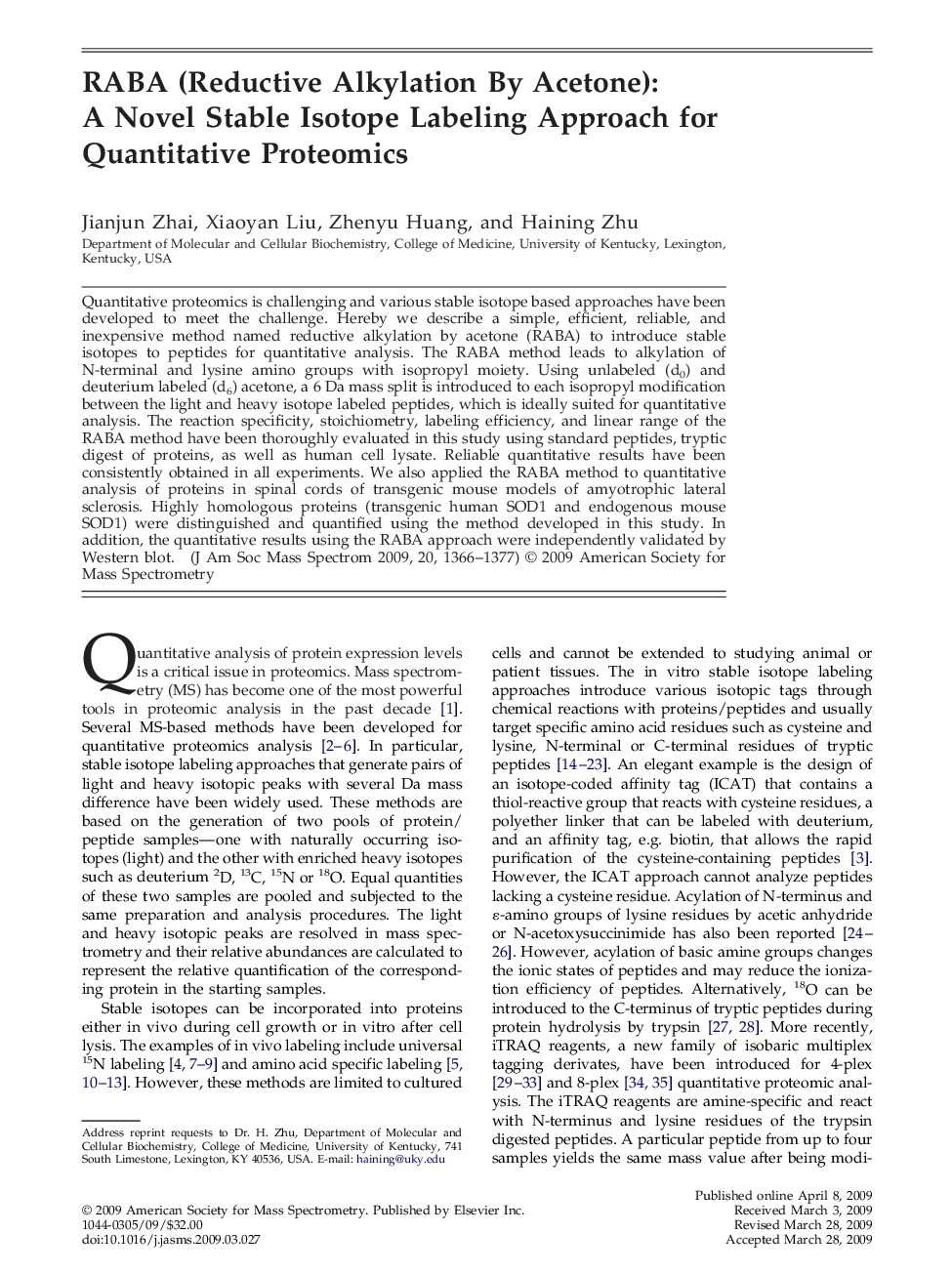| Article ID | Journal | Published Year | Pages | File Type |
|---|---|---|---|---|
| 1195255 | Journal of the American Society for Mass Spectrometry | 2009 | 12 Pages |
Quantitative proteomics is challenging and various stable isotope based approaches have been developed to meet the challenge. Hereby we describe a simple, efficient, reliable, and inexpensive method named reductive alkylation by acetone (RABA) to introduce stable isotopes to peptides for quantitative analysis. The RABA method leads to alkylation of N-terminal and lysine amino groups with isopropyl moiety. Using unlabeled (d0) and deuterium labeled (d6) acetone, a 6 Da mass split is introduced to each isopropyl modification between the light and heavy isotope labeled peptides, which is ideally suited for quantitative analysis. The reaction specificity, stoichiometry, labeling efficiency, and linear range of the RABA method have been thoroughly evaluated in this study using standard peptides, tryptic digest of proteins, as well as human cell lysate. Reliable quantitative results have been consistently obtained in all experiments. We also applied the RABA method to quantitative analysis of proteins in spinal cords of transgenic mouse models of amyotrophic lateral sclerosis. Highly homologous proteins (transgenic human SOD1 and endogenous mouse SOD1) were distinguished and quantified using the method developed in this study. In addition, the quantitative results using the RABA approach were independently validated by Western blot.
Graphical AbstractThis study describes a simple, efficient, reliable, and inexpensive method named reductive alkylation by acetone (RABA) to introduce stable isotopes for quantitative proteomic analysis.Figure optionsDownload full-size imageDownload high-quality image (142 K)Download as PowerPoint slide
